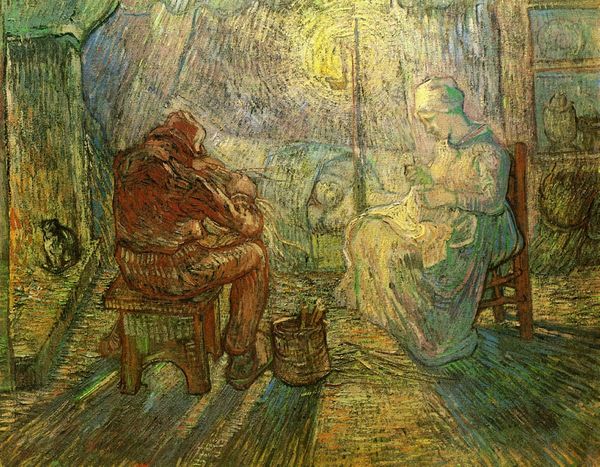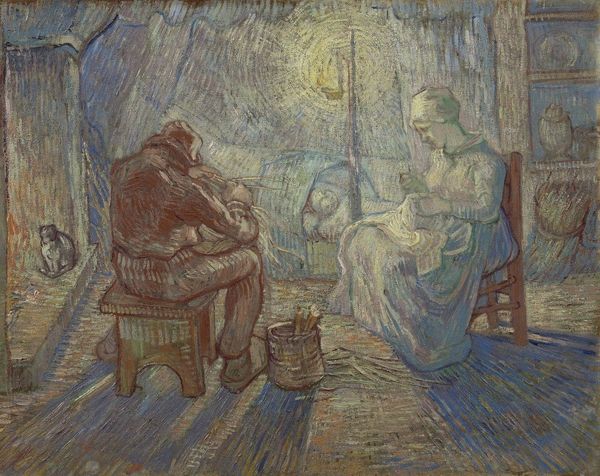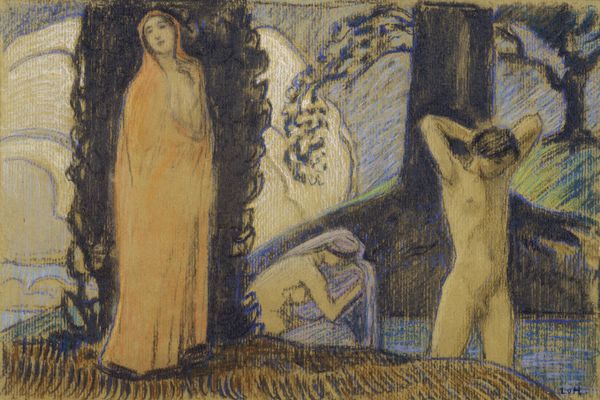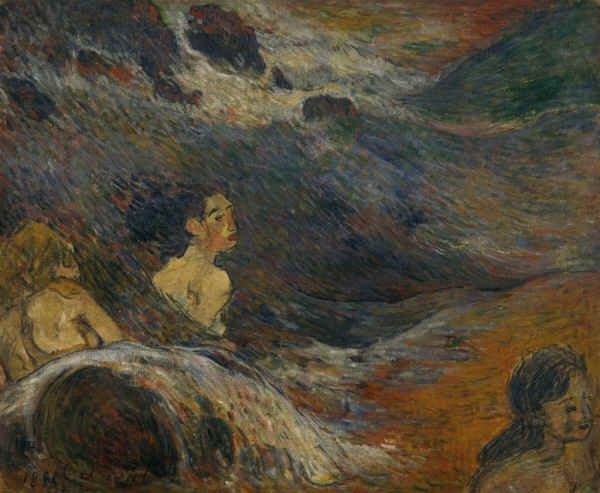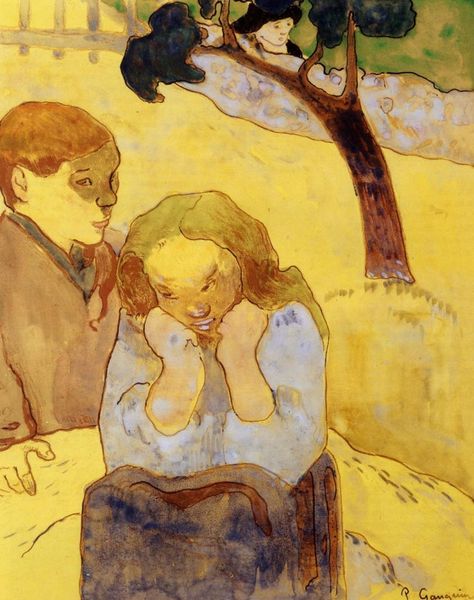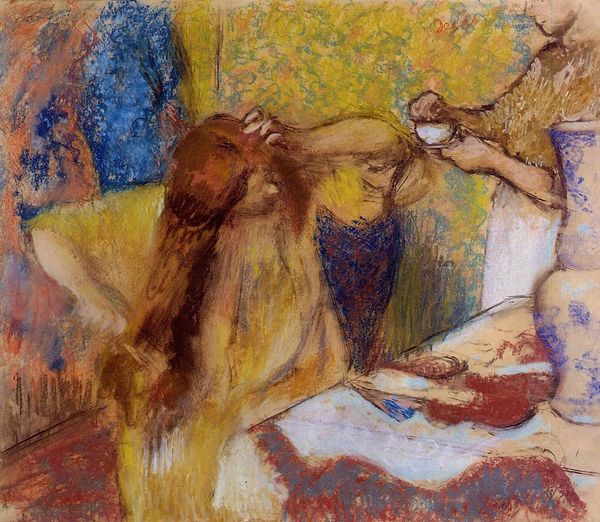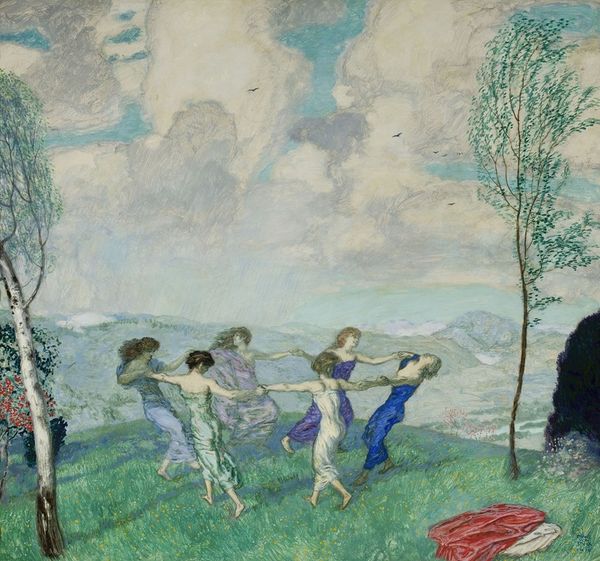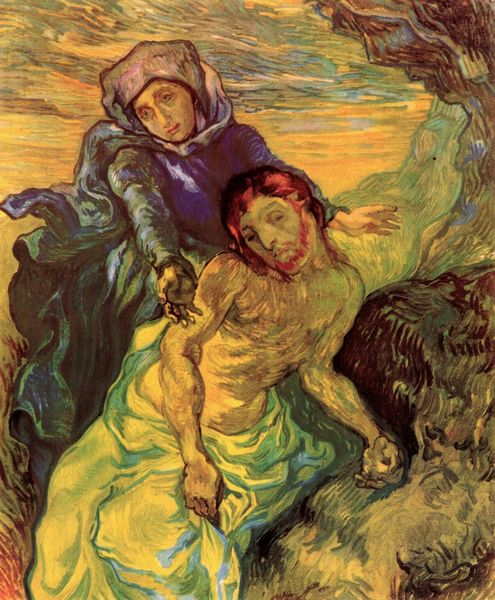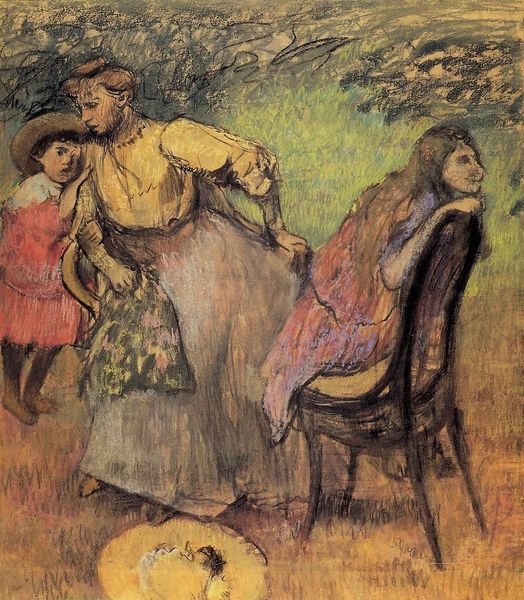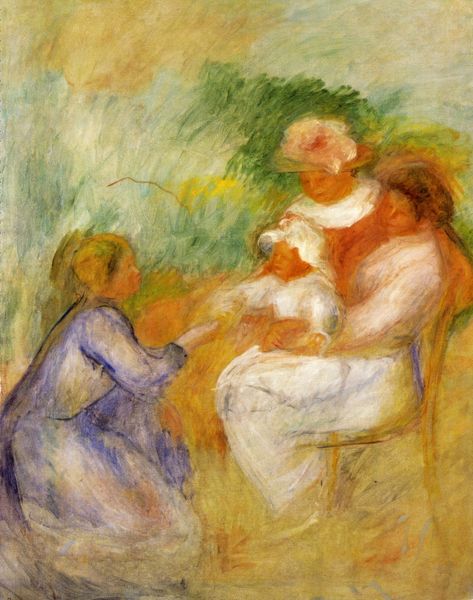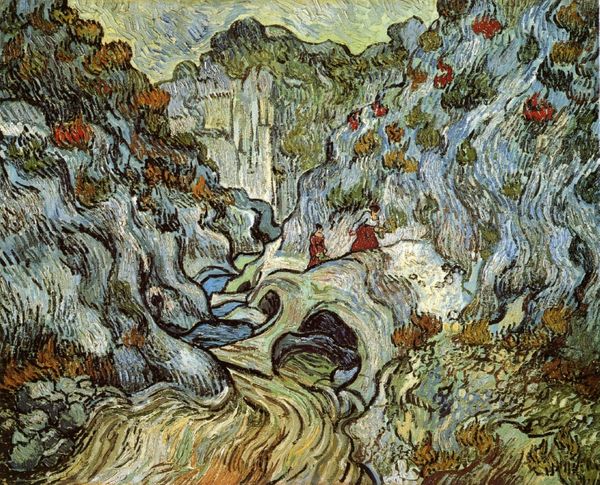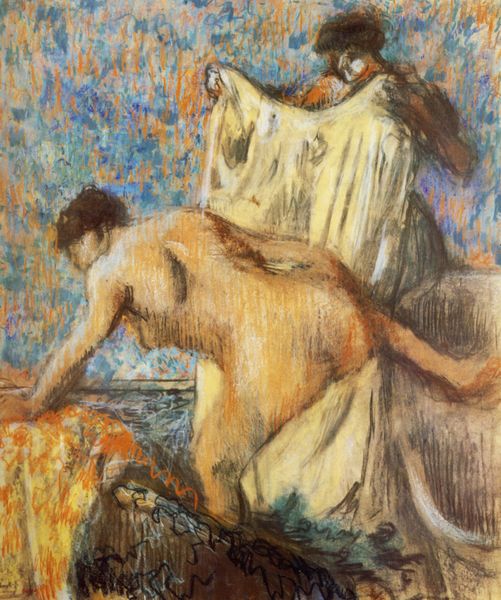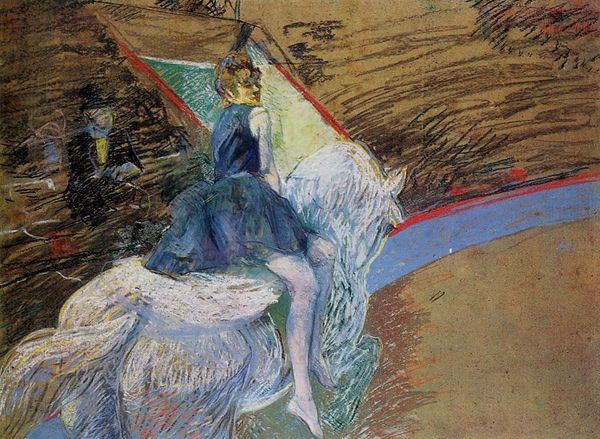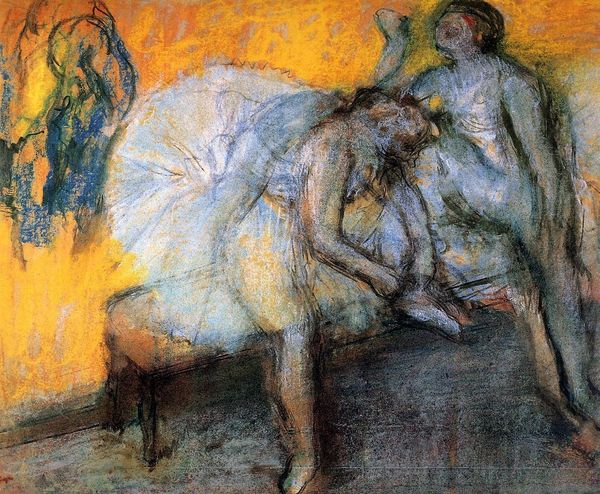
painting, oil-paint
#
narrative-art
#
painting
#
impressionism
#
oil-paint
#
landscape
#
impressionist landscape
#
figuration
#
oil painting
#
history-painting
#
post-impressionism
Dimensions: 50 cm x 65.5 cm
Copyright: Public Domain: Artvee
Did you know? Although most famous for his landscapes, Vincent van Gogh (1853- 1890) created several paintings inspired by the history scenes of the 17th-century Old Masters. Van Gogh painted The Raising of Lazarus (1890) during his stay in the mental hospital at Saint-Rémy-de-Provence in Southern France, where he also completed his famous oil The Starry Night (1889). The painting depicts the scene from the Bible in which Lazarus of Bethany rises from the dead. Wrapped in white grave cloths, Lazarus rises from his tomb and is met by his two sisters, dressed in green. The subject for The Raising of Lazarus was taken from a 1632 etching by the Dutch Master Rembrandt (1606-1669), a copy of which was sent to Van Gogh by his brother Theo. Van Gogh makes use of Rembrandt’s original triangular composition, but replaces his monochrome palette with bright shades of yellow, orange and green. The painting is completed in Van Gogh’s signature swirling technique, achieved through impasto (thick layers of oil). The artist builds a hopeful tone by including bright, bold colours and the positive symbolism of a blazing sun. The figure of Lazarus, with his red hair and beard, closely resembles the appearance of Van Gogh in his self-portraits. Could Van Gogh have identified with the themes of suffering and recovery in the story of Lazarus? Why do you think he chose to reproduce this scene during his stay in hospital? Editor: Lucy Jude Grantham
